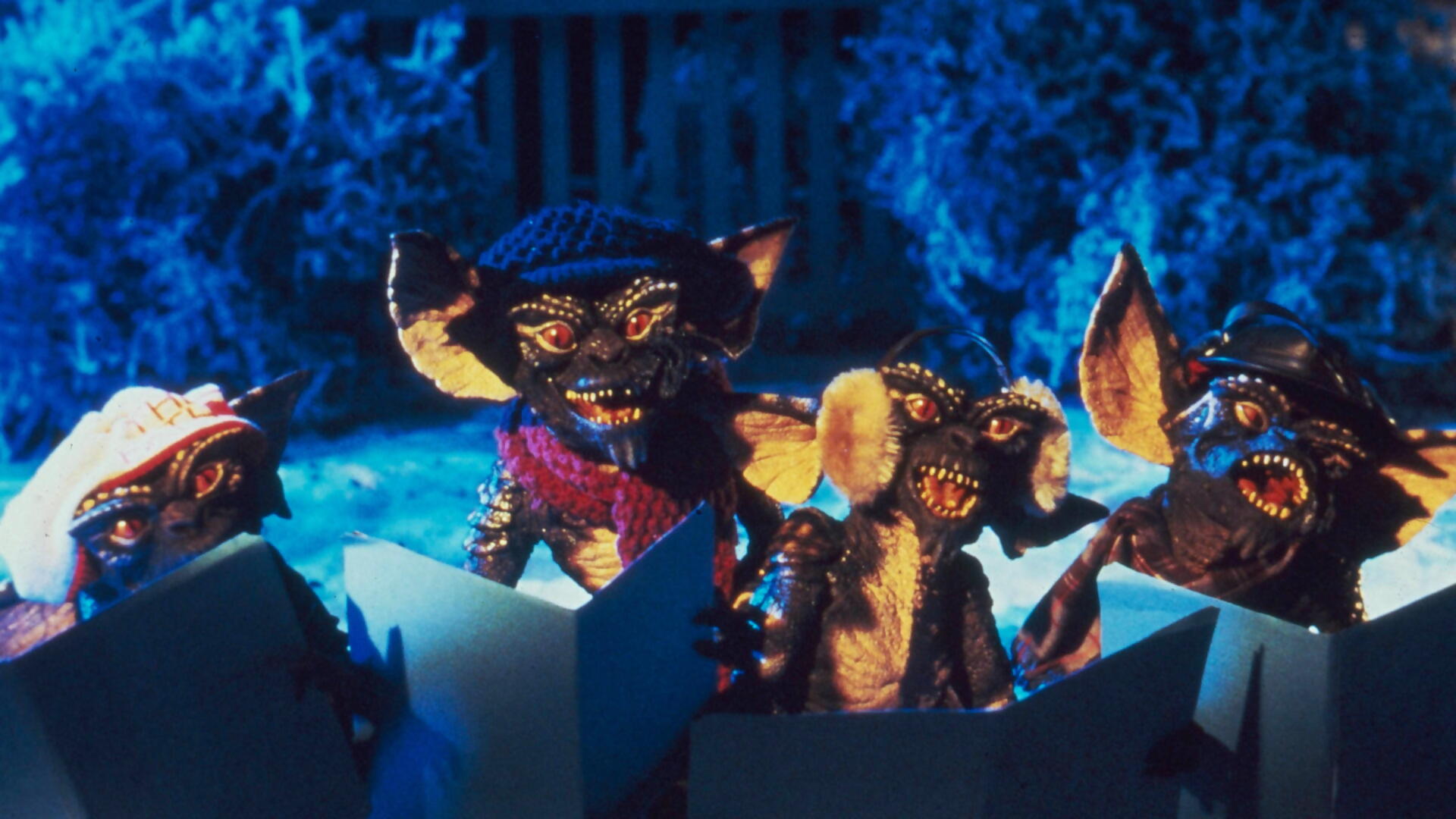
Vladimir Lenin once wrote, “The way to crush the bourgeoisie is to grind them between the millstones of taxation and inflation.” Lenin, clearly, did not anticipate a much mightier political agitator – the Gremlin.
Invented in early-20th century RAF circles to jokingly explain malfunctions in aircraft machinery, before being first popularised by Roald Dahl, Joe Dante placed the gremlin firmly in the Dark Christmas Movie Canon with Gremlins (1984). It told the story of a young man, Billy Peltzer (Zach Galligan), from Anywhere, USA, whose strange new pet accidentally spawns waves of cackling monsters, hell-bent on causing Christmastime chaos.
It’s a riotous farce, a gateway for kids into edgier horror, and an influential dark festive film. It’s also – apologies for ruining another childhood favourite – rich with political overtones.
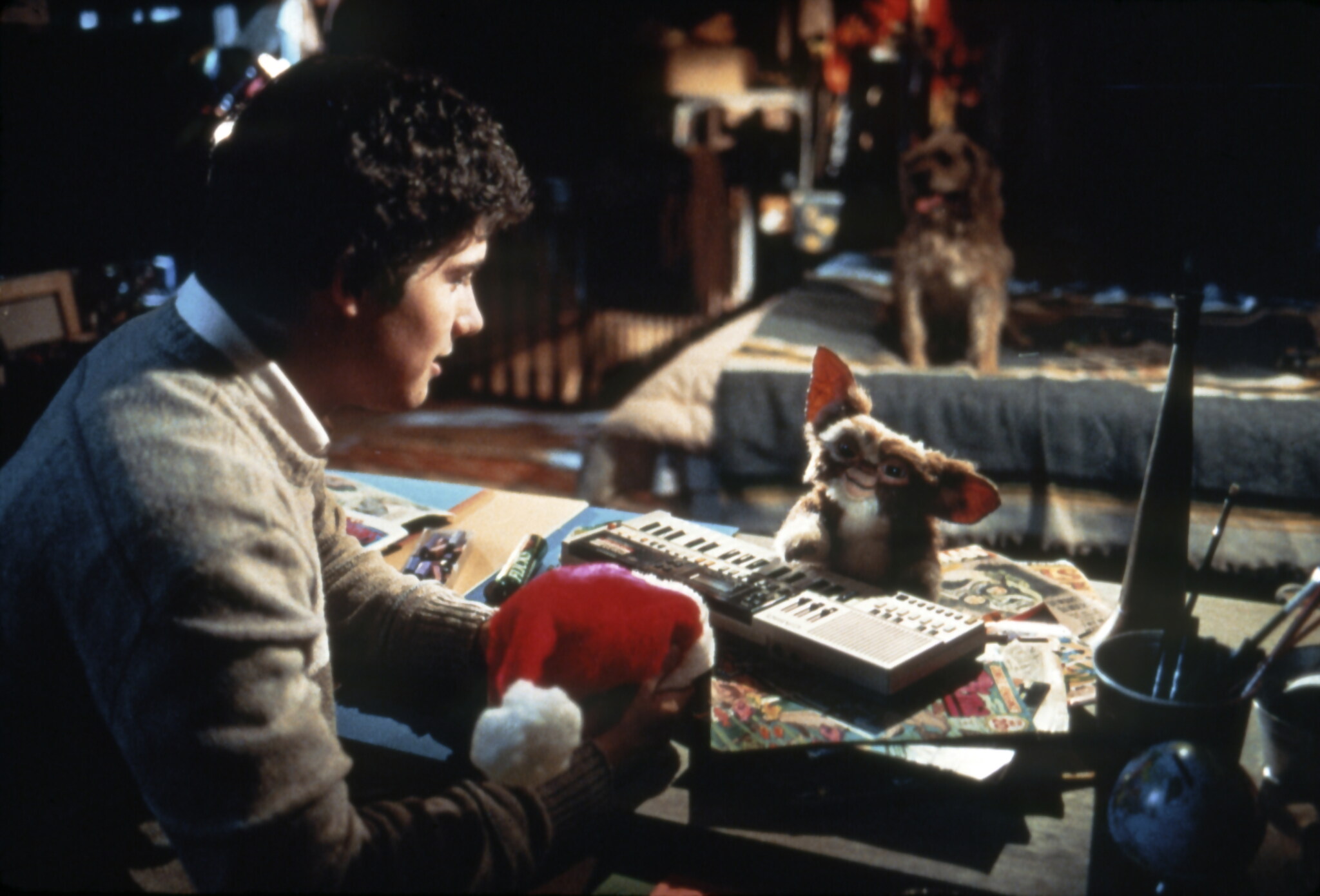
Credit: Warner Bros. Pictures
We take a lot at face value about the gremlins. What really are these creatures? I don’t want to hear dense lore explaining where their egg was first discovered, or from what mythic creature they evolved from – I’m talking about how they’re defined. We’ve spent decades arguing about the plausibility and contradictions of their defining rules, a tactic from “Big Gremlin” to distract us from the truth – these are insurgents and pint-sized revolutionaries.
As soon as you give a physicality and personhood to a jokey folklore, you create for it identity, motive, and agenda. No Gremlin exists in a vacuum, and it’s obvious the Gremlins weren’t just waging a war on Christmas – they were the good guys.
It doesn’t take an academic to notice Gremlins’ satire. While it gets supercharged in the sequel, the first Gremlins takes a swing at the Reagan-era xenophobia towards globalisation, seen with Dick Miller’s Mr. Futterman, who laments the loss of flawless American machinery.
There’s also the clearly-signposted jokes at the expense of the dwindling zeal for American innovation with Billy’s dad, a hopeless but dedicated inventor of unsellable tat. The self-made American man is a joke; he can either blame the world outpacing him, or cling to a stubborn assertment of his own ability.
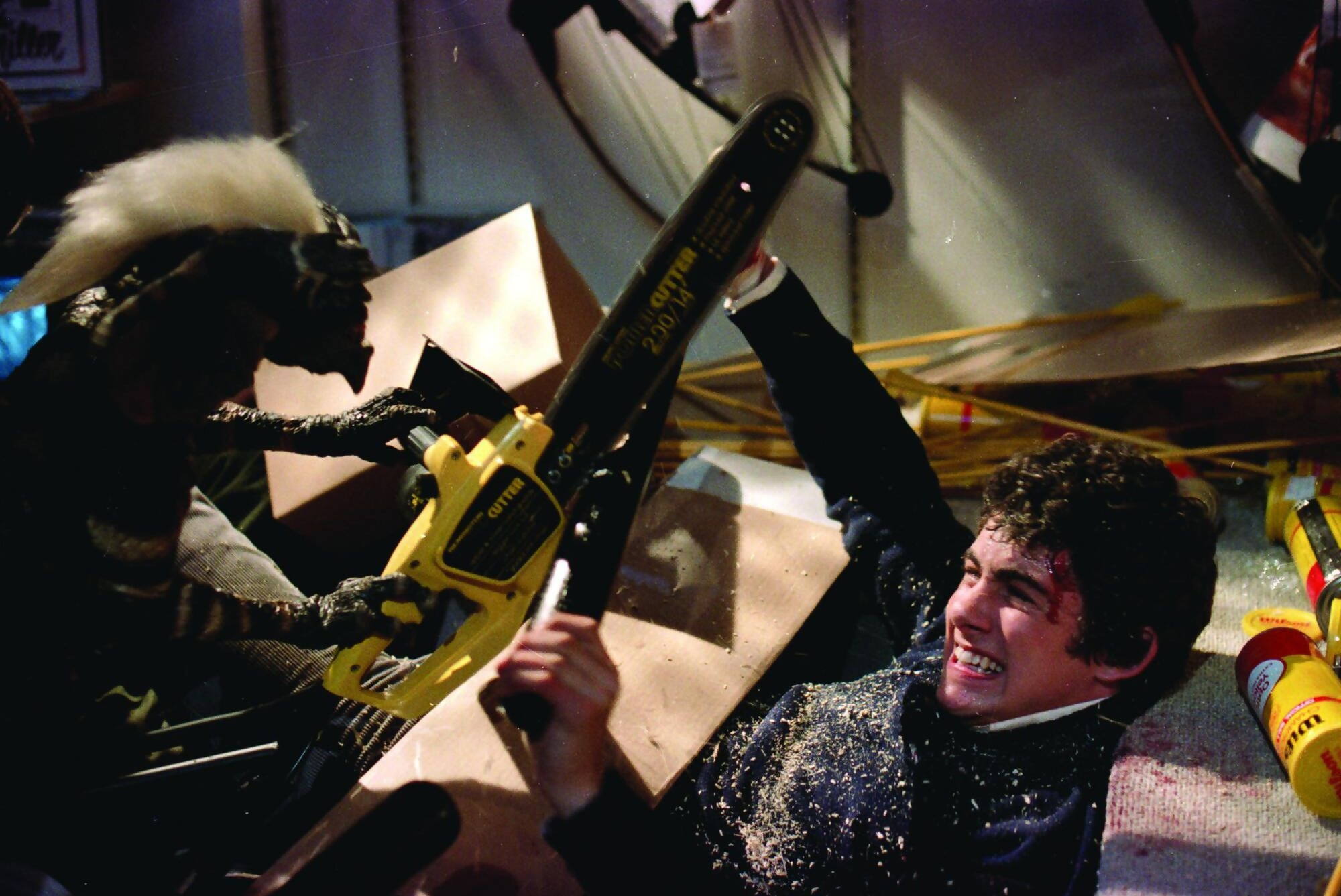
Credit: Warner Bros. Pictures
But beyond these isolated characters, conservatism looms large – and what day of the year crystallises the conservative values of capitalism, family, and religion more perfectly than Christmas? Kingston Falls, Pennsylvania, the fictional town Gremlins takes place in, is plucked straight from President Reagan’s fetishization of middle America where he wanted to reinstate the importance of traditional family values.
In the constructed studio backlot, it’s a place where the idealism of 50s small-town America – made all the more obvious seeing as it’s the exact same backlot where Back to the Future’s Hill Valley came to life.
With the noticeably fake snow and the cranked-up festive tunes, it feels like Dante’s camera is trying to signal Kingston Falls’ inherent artificiality, that everything we’re watching takes place not in a town, but a construct, one propped up more by its chummy, traditionalism than by real people. As Jason Flatt argues, “1984 was around the peak of Reagan-era unemployment and massive economic fear and uncertainty. A resounding desire for isolationism, both for the United States from foreign products and for the suburbs from outside, urban influence were the prevalent culture.”
When Christmas comes, this translates into an emotional hollowness too; when Billy’s mother has a quiet moment crying at the climax of It’s a Wonderful Life, is she in fact affected by a sincere and painful reminder of fraternity and community that’s lacking from their festive hearth? Any attack on Kingston Falls would be not just to disrupt holiday cheer, but to prove it was never there in the first place.
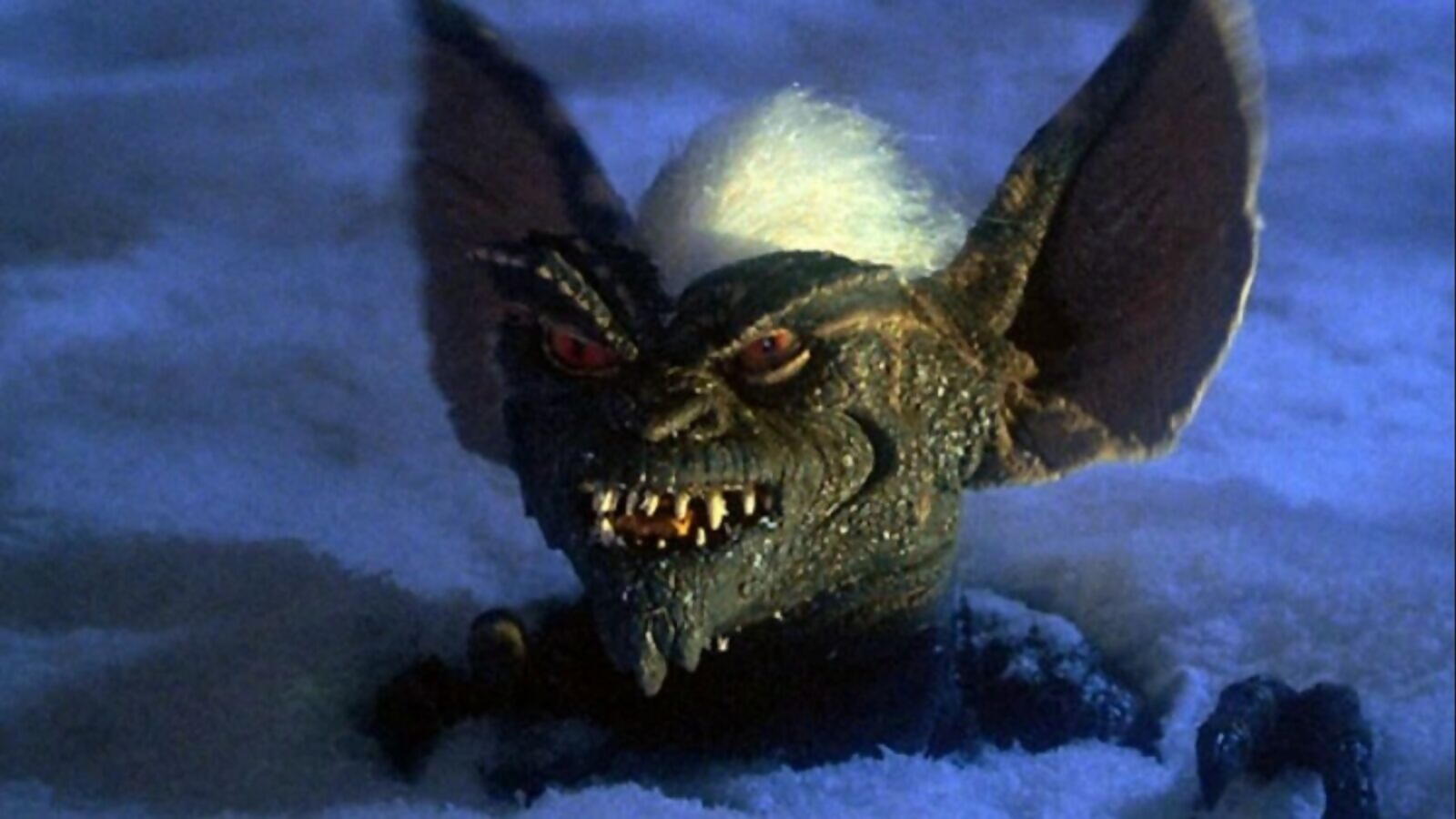
Credit: Warner Bros. Pictures
Revolution, thy name is Mogwai. Gizmo is our OG gremlin, framed initially with Orientalism (Billy’s dad dismissively says its name is just “some Chinese word”), but soon the animal is redefined as a capitalist plaything; he moves from personhood to possession. Gizmo is plastered with ideology throughout the film: police officers laugh that he’s a “patriotic lil fella” for waving a miniature American flag, and once he realises Mogwai can self-reproduce, Billy’s dad is dead set on mass-breeding the creatures to sell as pets, not minding that Gizmo experiences tremendous discomfort birthing other Mogwai.
Once the evil gremlins assemble, the film makes an effort to stress Gizmo’s benevolence, separating him from his brethren. Billy introduces him to his crush Kate (Phoebe Cates) with, “He’s with me, he’s not one of them,” the words “me” versus “them” doing a lot to divide members of the same species. Who is Billy Peltzer to decide which natural state of a newly discovered animal is inherently good or evil?
As a domesticated animal, Gizmo is so deconditioned from the gremlin cause and his own spawn that he dedicates himself to killing his distorted double, Stripe, in the climax. Mogwai can be accepted and even loved, as long as they conform in behaviour and physiology to an approved, adorable, and highly marketable standard.
Like Gizmo, the gremlins become walking, cackling poster-boys of ideology. No class analysis of Gremlins is complete without taking apart its ludicrous centrepiece, where the horde of critters run riot in Kingston Falls’ Irish bar. Much speculation has been offered on what the gremlins represent, but it’s the bar sequence, where the gremlins gamble, drink, rob, vandalise, and pervert themselves, that unlocks their deepest symbolism – they are a parody of conservative scapegoating.
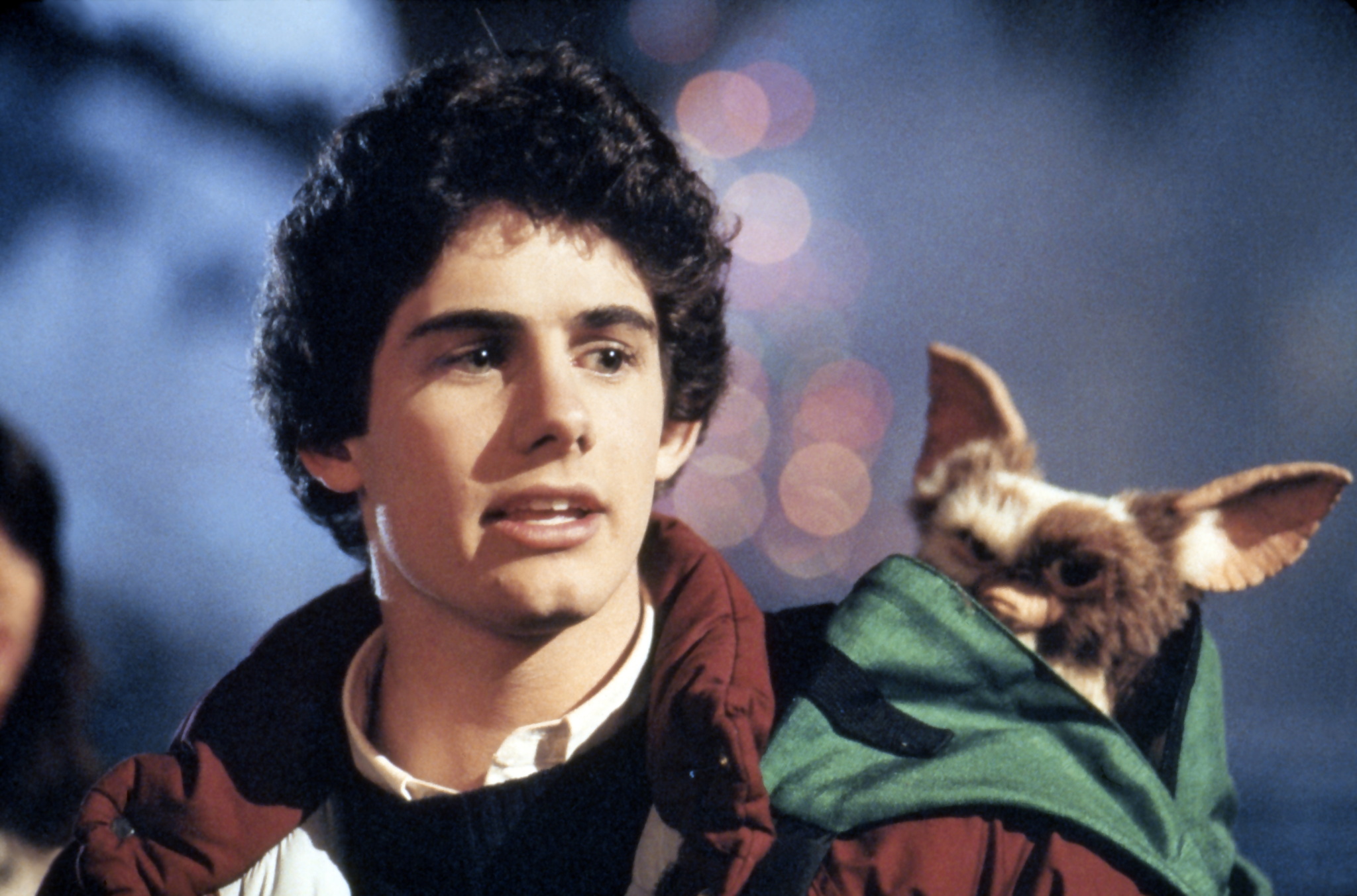
Credit: Warner Bros. Pictures
For right-wing candidates like Reagan to win working class votes, blame for economic and societal decline is often planted with an ideological “other” within American society, in order to redirect it from corporations and politicians. Reagan, the “Law and Order” candidate, took a hard moral and litigious stance against crime, signing the Crime Control Act the same year Gremlins unleashed its own wave of miscreants.
Reagan’s electorate were instructed to look down on the uncouth, the criminal, the reprobate, convinced these unfortunate souls were all symptoms of a moral failure rather than a policy one. In the bar sequence, the Gremlins are mockingly performing as the very degenerates and lowlives America had become unsympathetic to, pantomiming the extent of rampant fear-mongering.
In sequences that match the anarchistic spirit of the proletariat storming palaces, the gremlins target all those who represent the ugliness of American conservatism. You, racist man, you will see your death at the hands of the gremlins. And you, elderly property magnate, you too will die at their hands.
Christmas is no more sacred than any outdated tradition; no other day has been as weaponized by corporate and religious powers. For 80s America, Christmas told its population to act piously, while in the same breath demanded their money – the gremlins see through this hypocrisy.
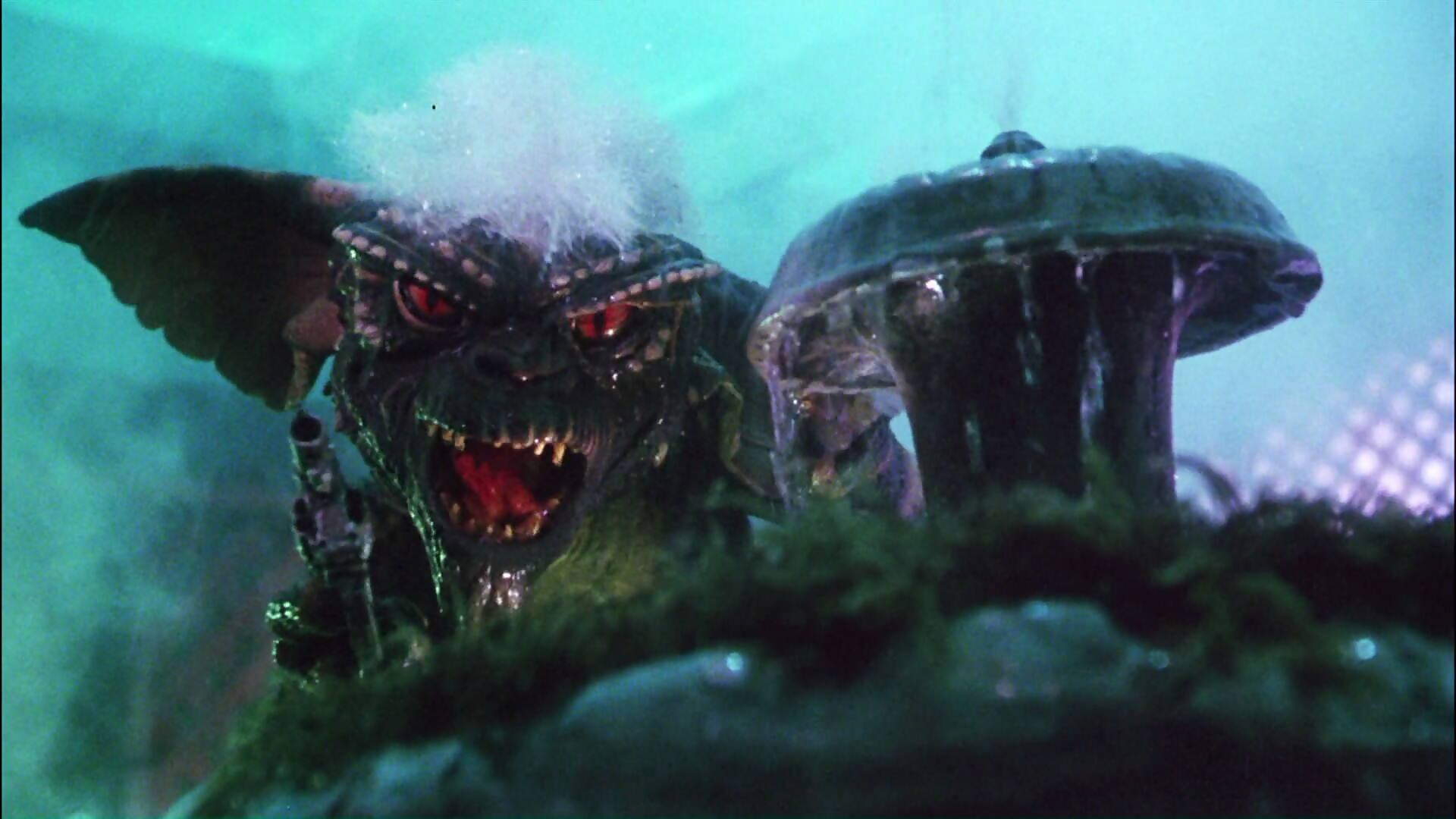
Credit: Warner Bros. Pictures
They mock its rituals (performing as shrill carollers) and violate its icons (mauling a townsperson dressed as Santa Claus), because the gremlins don’t want reform, or restrictions, or compromise – they have judged Christmas sickly, and take it upon themselves to tear it down. It’s a point reflected in Kate’s now-iconic Santa Claus monologue, where her father’s attempt to do something kind and magical results in his brutal death – nothing pure about Christmas can survive in the dark, asphyxiating chimney of capitalism. As she stares blankly ahead recounting her painful story, is she too making the strange but resonant connection between her trauma and the gremlins?
If Kate and Billy for a fleeting moment considered the righteousness of the gremlins’ crusade, it doesn’t stick – they show they’re more than willing to destroy parts of their cosy town to wipe out the gremlins from the planet. Maybe the regressive values they lived by was too thick to see through, maybe the truth the gremlins showed them was too confronting to realise.
In the end, Gizmo’s owner Mr Wing takes Billy’s pet away from him, explaining he’s not ready for the responsibility of housing a Mogwai – but before he goes, Gizmo has something to say. Billy is confused, but as Mr Wing says, “To hear, one has only to listen.” You get the feeling that if Billy opened his ears to what the gremlins were trying to tell him, he’d hear Gizmo squeaking in his cutesy, high-pitched voice, “Vive la révolution!” as he was carried off into the night.



